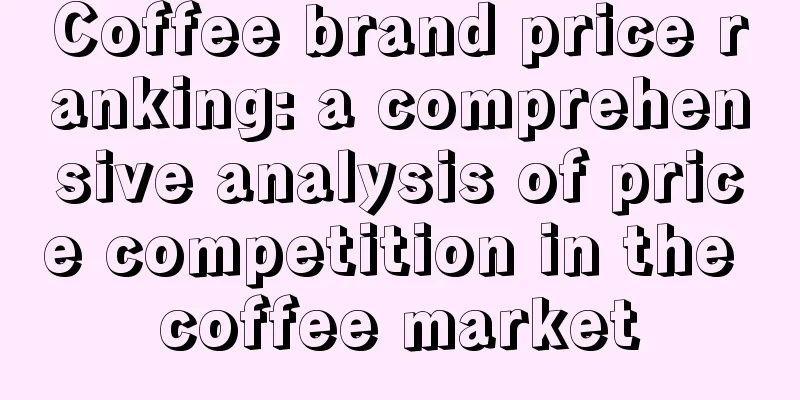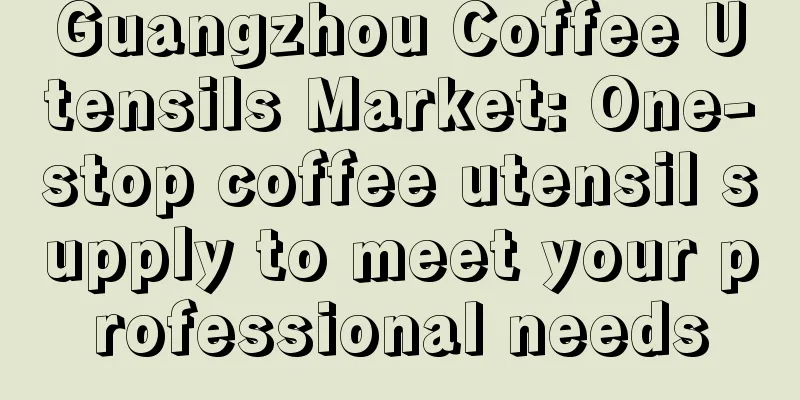Coffee brand price ranking: a comprehensive analysis of price competition in the coffee market

Price Competition in the Coffee MarketThe coffee market is an industry full of fierce competition. In order to attract consumers, various brands not only work hard on product quality, but also compete for market share through pricing strategies. This article will analyze the competition of coffee brands from the perspective of price. High-end brand: StarbucksAs one of the most well-known coffee chains in the world, Starbucks is known for its unique brand image and high-quality products. However, this high-end positioning also means that Starbucks is relatively expensive. A regular-sized (GranDE) cup of Americano costs about RMB 30 in mainland China. Mid-range brand: NestleNestle is one of the world's leading food and beverage companies and has a wide influence in the Chinese market. Compared with Starbucks, Nestle is positioned more mid-range and has launched a variety of instant coffee products suitable for home use or office enjoyment. Depending on the specifications and flavors, the price of Nestle instant coffee ranges from RMB 10 to RMB 50. Low-end brand: LawsonLawson is a Japanese convenience store chain that has also opened several stores in the Chinese market. In addition to traditional convenience goods, Lawson also offers a variety of instant coffee products. As it is positioned as a cheap and affordable brand, Lawson's coffee prices are relatively low. A regular-sized cup of instant coffee costs about RMB 5 at Lawson. Other brands: Luckin CoffeeIn recent years, a new force has emerged in the Chinese market - Luckin Coffee. As a new coffee chain brand featuring online sales and unmanned stores, Luckin has quickly won a large number of consumers with its highly competitive pricing strategy. Depending on the region and product type, the price of Luckin Coffee ranges from RMB 10 to RMB 30. SummarizeIn summary, in the current Chinese market, there are obvious price differences among brands. High-end brands such as Starbucks attract consumers who pursue taste and experience with their unique brand image and high-quality products, and their prices are relatively high; mid-range brands such as Nestle focus more on home use and office needs, and their prices are relatively moderate; low-end brands such as Lawson use cheapness and affordability as their selling point, attracting some consumers who pursue economy and affordability; and the emerging brand Luckin Coffee is rapidly expanding its market share through a highly competitive pricing strategy. Different positioning and target audiences have led to the formation of obvious price levels among these coffee brands in the market. |
>>: The coffee bean production process: from cultivation to roasting
Recommend
A complete collection of coffee utensils, exquisite utensils for tasting coffee culture
This article introduces the exquisite utensils th...
Coffee beans come in a variety of flavors, with a variety of tastes
Coffee beans come in a variety of flavors, with a...
Coffee bean importing countries: the world's most savory countries
Coffee bean importing countries: The country of t...
Make your own coffee at home and enjoy the pure and mellow taste
Making your own coffee at home is a great way to ...
How much does a kilogram of coffee beans cost?
How much does a kilogram of coffee beans cost? Co...
Detailed explanation of how to make coffee beans
Making coffee beans is a delicate process that in...
How much is the wholesale price of coffee beans?
How much is the wholesale price of coffee beans? ...
How valuable is a barista certificate?
The value of a barista certificate varies by regi...
What are the best coffee bean brands in the world?
The extensive influence of global coffee culture ...
Can I drink coffee beans directly soaked in water?
Can I drink coffee beans directly soaked in water...
Coffee: A Women's Friend or a Health Hazard?
Coffee: A Women's Friend or a Health Hazard? ...
The effects of coffee on men, truth and misunderstanding
There are some real and some misconceptions about...
The core of a coffee shop: the selection and quality of coffee beans
Coffee Bean Selection and Quality In a coffee sho...
What is the average monthly salary for baristas in Shanghai?
What is the average monthly salary for baristas i...
Ranking of famous coffee bean varieties: What are the most popular coffee beans in the world?
The most popular coffee bean varieties in the wor...









